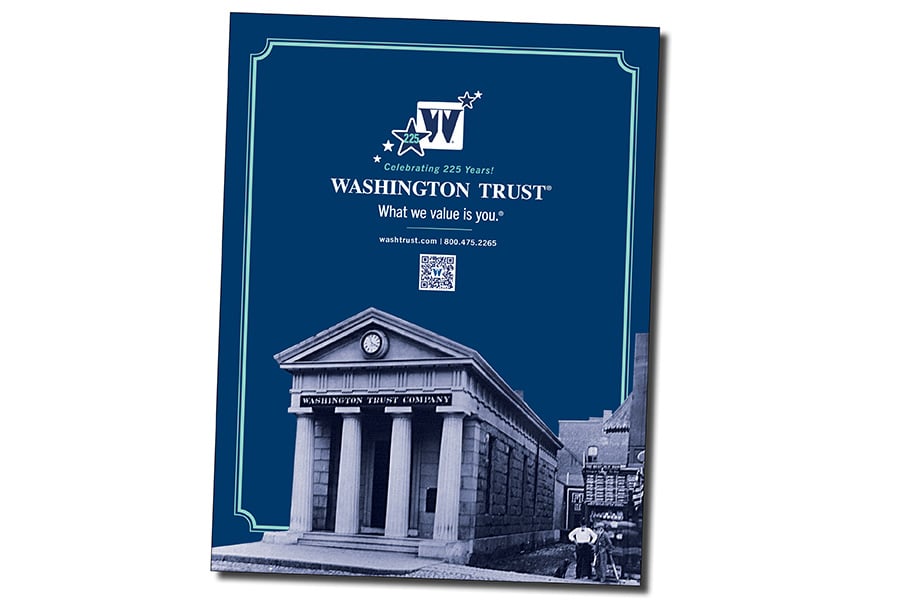Why Does Rhode Island Have Such a Full House?
Since 2021, Rhode Island has tried to tackle its housing shortage by relaxing zoning laws and encouraging new builds, but the results are sluggish. Our reporter, Ellen Liberman, takes a look at what's holding the state back.
The Narragansett town council sat on one side of the table, the Planning Board on the other, the lawyers occupied the ends. And, overhead, dangled the threat of a recall petition. The August workshop was meant to open the conversation on the legality of town zoning ordinances that limit density in the wake of new state laws meant to ease the housing crunch.
In early spring, on the advice of its attorneys, a newly elected Town Council proposed loosening fourteen zoning regulations to bring Narragansett policies in line with state law. A furious backlash ensued. The Planning Board voted 4-1 to withhold its support from the changes, and a residents’ group started gathering signatures.
Narragansett can be a fractious place, where residents have pitched yearslong battles over a library, a bike path and access to its iconic beach. But no topic is more contentious than housing.
The town of 16,000 is a unique combination of University of Rhode Island students, who occupy half of the rental units nine months of the year; summer tourists, who take the other three months; and high-income residents. According to Realtor.com, the median price listing for a three-bedroom home in Narragansett is now $1.1 million.
Harry Schofield, chairman of the Narragansett Town Residents Association, observed the proceedings with suspicion.
“This is all for show,” he says.
The NTRA has been an avid supporter of local measures meant to limit rental housing — such as a 2023 ordinance that prohibits more than three college students from occupying a single-family home, which now appears to be in direct conflict with a 2024 state law that allows five unrelated persons to live together. Schofield says prices will never come down until URI builds more student housing and makes rentals less lucrative. He calculates a three-bedroom house in town can easily make $60,000 a year in student and summer rental income.
“It’s a perfect storm,” he says. “The town needs to aggressively negotiate with URI and make it a statewide issue and use a carrot-and-stick approach whereby you heavily enforce the three-student ordinance.”
George Nonis, president of Narragansett 2100, which represents landlords, is Schofield’s frequent opponent at meetings, on the editorial pages and in the courts, where the efforts of previous Town Councils to place limitations on housing density have been regularly defeated. Most recently, Superior Court Judge Jeffrey A. Lanphear in February reversed a unanimous Planning Board decision to deny an application to build ten duplexes, with five set aside for low- or moderate-income families.
“They always try to pit the landlords and investors against everybody else,” Nonis says. “They say they want affordable housing, yet they do nothing to support it. They don’t want auxiliary dwelling units, or duplexes; they don’t want any additional construction. Bottom line: They don’t want more building.”
The Pew Charitable Trusts estimates that the United States is short four to seven million homes, a national crisis decades in the making. Among its main drivers are zoning laws.
First established in the 1920s, these laws have become more restrictive over time, says Alex Horowitz, project director of Pew’s Housing Policy Initiative. Design, lot size and parking requirements, stricter building codes and restrictions on multifamily housing — enacted to raise property values and keep communities at higher income levels — have squeezed low-income, working class and now middle-class residents out of many communities and boosted homelessness.
“Essentially housing works like an escalator, and when there’s a shortage, the escalator is going down. People are looking for places they can afford; old housing gets bid up and there’s a crunch at the bottom,” says Horowitz. “When lots of housing gets built, [the escalator] is moving up: People trade up into nicer homes and locations that work better for them. The shortage has meant the escalator has been going down for years now.”
In May, Pew presented statistical evidence of the state’s downward trajectory to the General Assembly: Rhode Island is fiftieth in the nation for new housing construction, the median price of a home is up 57 percent in five years — from $303,000 in 2020 to $476,000 in 2025 — and inventory is down 78 percent since 2016. In addition, median rents have soared from $941 in 2017 to $1,480 in 2025, and homelessness increased by 107 percent to an all-time high in 2024.
After bottoming out in the 2008 recession, Rhode Island is now in its eighth year of a seller’s market, says Chris Whitten, president of the Rhode Island Association of Realtors.
“First-time homebuyers looking for something in the $300,000 to $400,000 range, those go very quickly, because we’re not making enough of those anymore,” says Whitten. “People have been talking about the influx of buyers coming into Rhode Island from Massachusetts because it’s a little bit more affordable. However, people aren’t talking about the people who are moving out of the state because there’s nothing to buy.”
Since 2021, the state has been doing everything it can to reverse the escalator. The General Assembly has passed nearly fifty housing bills and created the state’s first-ever permanent funding stream for affordable housing production. Last year, voters overwhelmingly passed a $120 million bond to fund affordable housing, homeownership programs and housing infrastructure. This year, Governor Dan McKee consolidated the state’s housing policymaking and planning under the Executive Office of Housing. In April, the state rolled out Housing 2030, a new plan setting a five-year goal of permitting 15,000 housing units.
“It about doubles the production for a five-year period, and we think it’s enough to bend the arc on rent and home ownership price increases,” says Secretary of Housing Deborah Goddard. “It’s a stretch, but I think we can get there.”
Goddard, the department’s fourth leader since McKee established it in June 2022, and a Cabinet member since March, says coordinating the efforts of the state’s various housing financing, development and nongovernmental organizations is critical to making that happen.
“There’s one point of accountability and responsibility, and it all works for transparency and efficiency,” she says.
Some cities have embraced the mission. In the last four years, East Providence has reformed its land-use ordinances to create overlay districts in some of its commercial corridors, which permit mixed uses by right, greater density and lower off-street parking requirements. It has aggressively courted commercial and nonprofit developers such as Stop Wasting Abandoned Property to build affordable housing on some of its most blighted parcels.
The city has been so successful, its ceremonial scissors have become dull with all the ribbon-cuttings. Currently, the city is working with One Neighborhood Builders and several social service agencies to develop a three-building campus on Taunton Avenue with 144 new apartments, 40 percent of them reserved for people experiencing or at high risk for homelessness. This fall, the city is working on a new ordinance requiring any future development of ten housing units or more to include 20 percent deed-restricted, affordable and fully accessible housing.
“Our housing authority, which manages three high rises and some scattered affordable housing developments, has a waiting list of thousands of people,” says Mayor Roberto DaSilva. “So I am always actively pursuing different avenues to create more housing stock so that the price point on rentals comes down.”
Likewise, Providence has been pulling every lever of government to crank up housing production. Over the last five years, the city has invested $55 million from the Providence Housing Trust Fund, and $41 million of its $166 million American Rescue Plan Act allocation, to create and preserve 1,600 new affordable housing units as well as homelessness intervention initiatives. One example is Tempo, a mixed-income family apartment building on Parcel 9 in the I-195 Redevelopment District’s Fox Point neighborhood. Developed in partnership with affordable housing builder and property manager Pennrose, Tempo’s sixty-six units opened in January, with a child care center, retail space and a public plaza on-site. Phase two, another mixed-income project known as Tandem, should be complete next year.
In 2019, the city launched its Anti-Displacement and Comprehensive Housing Strategy, a ten-year plan to develop housing options for residents of all income levels. It recently completed an update to its comprehensive plan and is expected to release a report on its housing accomplishments and goals this fall. Under Mayor Brett Smiley, Providence has streamlined the permitting and development process, relaxing the rules on row houses and multifamily dwellings, and up-zoning areas to increase density in growth corridors with good access to public transit, such as North Main Street.
Housing and Human Services Director Emily Freedman says the city has been working to reach a “very robust level of production” of housing at different price points by “removing barriers to development, thinking about how to have sustained and appropriate growth. The community has identified housing and housing affordability as the utmost priority.”
The cause has attracted new allies. For example, Neighbors Welcome! Rhode Island, founded three years ago by a group of housing experts, is “looking to fix barriers to housing development at the state level while also building a network of local residents, community groups and leaders who want to show up in support for housing development at the municipal level,” says Vice President Kris Brown.
AARP Rhode Island made accessory dweling unit legislation a “top priority” in the last legislative session. The new law permits homeowners to build an ADU on their owner-occupied property as an expansion or detached structure by right, although local zoning laws still apply. The group has published an online guide explaining the requirements and procedures of creating an ADU, says State Director Catherine Taylor.
“We have really old housing stock that is hard to maintain and has too many stairs. And we all want to stay in our communities, if not necessarily our homes,” she says.
Speaker of the House K. Joseph Shekarchi, who has made housing the centerpiece of his leadership, says, “I’m happy with the execution. We are seeing real progress. I’m proud of those bills. They were not easy to accomplish. We certainly have a lot more work to do.”
Numbers from the Rhode Island Public Expenditure Council, however, tell a different story. Its Housing Policy in Rhode Island report last October found a widening gap between the number of units needed to keep pace with household formation and replace lost units, and the state’s goal of boosting the supply.
New housing permits in the first half of 2025 declined 6.7 percent over the same period in 2024, a sign that the state is losing momentum, says RIPEC Public Policy Analyst Jeffrey S. Hamill.
“We’ve passed dozens of laws; we’ve spent hundreds of millions of dollars, and the results aren’t showing up in the numbers,” he says.
Nonetheless, Hamill finds optimism in the new housing coalitions, reform of housing policy governance and the state’s success in building multifamily housing. The latter remains the primary driver of new construction — from 245 permits in 2021 to nearly 400 in 2024.
“We’re still struggling to build what we need. And you really need to have an all-of-the-above strategy when it comes to new construction. More building leads to more vacancy, and that hopefully leads to prices stabilizing.”
Brenda Clement, executive director of HousingWorks RI, says Shekarchi’s package of housing bills has “really started to change the landscape at the local level about encouraging growth and development. Almost 80 percent of our funding comes from the federal level, but what you build, where you build, and how you build are all controlled at the local level. Are we done? Absolutely not. Is there resistance? Absolutely.”
In Narragansett, elections turn on the axis of hot button issues and last November, three council members who advocated for more restrictive housing were swept out of office. Depending on whom you talk to, it was either a desire for a new direction or a landlord’s plot to flood the rolls with student voters. One of the losers, Steven Ferrandi, sued the town in July for failing to enforce the three-student ordinance. One of the winners, Town Council President Alex Menzies, is a defendant, uncomfortably between the lawyers’ advice and some residents’ insistence that Narragansett is not bound by state law. He is unsure how to turn the town where he was born, raised, schooled and loves, into an inclusive and affordable place, when people are ready to break out the pitchforks less than six months after an election.
At thirty-two, he has a good job as a senior merchandising analyst for CVS Health — but not good enough to buy a home in Narragansett. He lives with his parents while he pays off his student loans and keeps looking.
“It’s been very challenging,” he says. “I can’t afford to live in the town I represent.”
________________________
Ellen Liberman is an award-winning journalist and columnist who has commented on politics and reported on government affairs for more than four decades.































